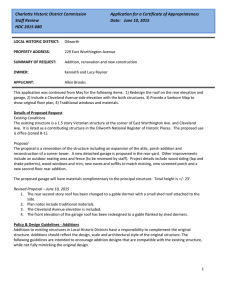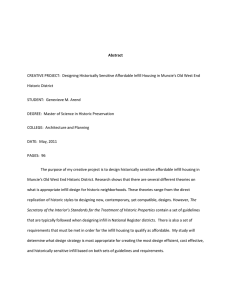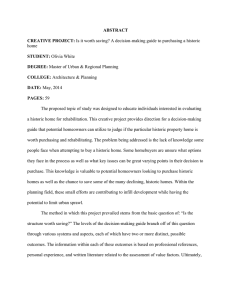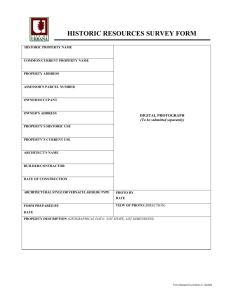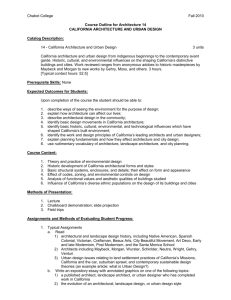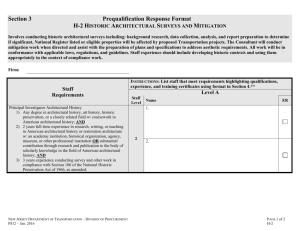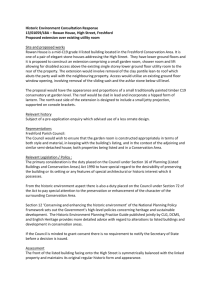Historic District Commission
advertisement
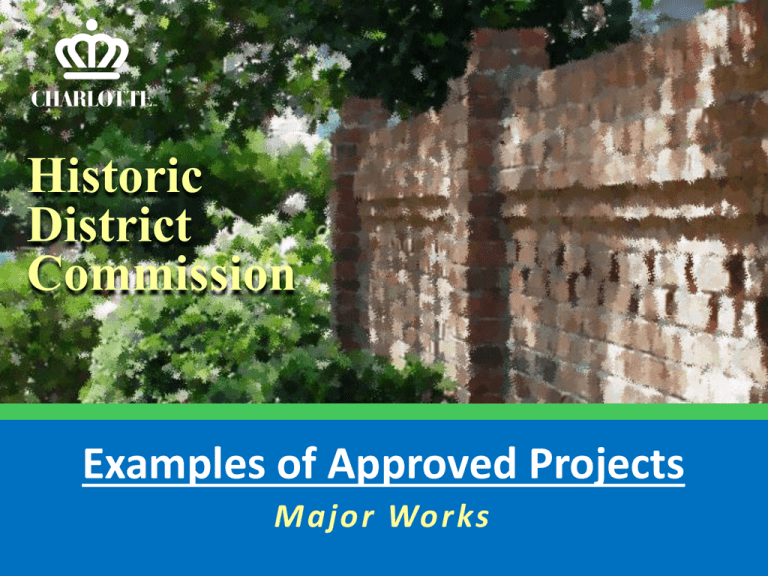
Historic District Commission Examples of Approved Projects Major Works Design Philosophy: Additions 1. Additions to existing structures in Local Historic Districts have a responsibility to complement the original structure. 2. Additions should reflect the design, scale and architectural style of the original structure. 3. Additions must respect the original character of the property, but must be distinguishable from the original construction. Charlotte Historic District Policy & Design Guidelines, page 36. Examples of Approved Additions The following slides are examples of approved major addition projects reviewed between 2014 and 2015. Critical design criteria for major additions are Size, Scale and Massing. These projects were reviewed and approved by the full Historic District Commission. *Replication of these projects does not guarantee immediate approval. Refer to the Policy & Design Guidelines for the complete list of design standards. Example 1: The addition to the one story house is toward the rear and slightly taller than the original house. The front façade and most windows were not changed. Addition Example 2: The two story addition takes advantage of the deep lot by locating it on the rear of the house. The addition is not highly visible from the street. Addition New addition New addition Example 3: This is another two story addition at the rear of the original house but within the existing building footprint. The new roof is an extension of the original roof line. Existing Front Proposed Front Existing Rear Proposed Rear Existing Left Elevation Proposed Left Elevation Existing Right Elevation Proposed Right Elevation Example 4: The addition to this house is not taller but wider on the left side. The new roof design and window pattern of the addition compliments the original house. Example 5: The site is a relatively small parcel, making a ground level rear addition unfeasible. The second story additions begin behind the front wall. The new front dormer reduces the mass of the roof facing the street. The side additions tie into the original gables. Example 6: The house is one story located on a corner lot. The design is a modest addition to a small house. New wall planes are offset from the existing walls to define new from old. Example 8: Drawings of the existing house with notes and dimensions. Example 8: Existing and proposed design. The new addition maintains a one story height. Example 8: Existing and proposed design. The new addition maintains a one story height. Design Philosophy: New Infill Construction 1. New construction in Local Historic Districts has an obligation to blend in with the historic character and scale of the District in which it is located. 2. The scale, mass and size of a building are often far more important than the decorative details applied. 3. New construction projects in Local Historic Districts must be appropriate to their surroundings. Charlotte Historic District Policy & Design Guidelines, page 34. New Infill Construction: Defining Context and Scale The next three slides illustrate various types of building scale on streets within historic districts. Some blocks have a uniform scale of buildings while others have a rhythm of varying building heights. Scale is defined as “…the relationship of the building to those around it.” Context is defined as “…the overall relationship of the project to its surroundings.” See the Charlotte Historic District Policy & Design Guidelines, page 34, for the complete list of design standards. Building heights can vary greatly on some blocks. The height range of original homes on this block is between 23 and 35 feet. The height of houses along this street are relatively uniform at an average of approximately 20 feet. An infill structure 30 feet tall or more may not be appropriate in this context. Infill Residential structures on corner lots are occassionally taller than others. Approved Projects The following slides are examples of approved projects reviewed between 2014 and 2016. Critical design criteria are Size, Scale, and Massing. *Replication of these projects does not guarantee immediate approval. Refer to the Policy & Design Guidelines for more information. Example 1: New construction - Single family house. Site plans must have contextual information (adjacent setbacks, property lines) and site specific details. Example 1: Single family house. New construction should be consistent with the existing context. Architectural notes and dimensions must be legible. Elevations should include architectural features that compliment the house and each other. Blank walls should be minimal on all elevations. Wall and roof planes can be detailed with windows, varied roof forms, changes in materials and other complimentary architectural details. Example 2: The new house in this example has a scale that is harmonious with original houses on the street. New infill house Example 3: Some areas have a suburban context with ranch style homes and larger lots. The proportions and scale of the new house is harmonious with adjacent houses on the street. New infill house Example 4: The scale of the approved multi-family building on the corner compliments the existing streetscape. New multi-family New multi-family Example 4 Continued: Appropriate architectural details minimize the massing and scale of the building. Example 5: The context of the area in this example is primarily multi-family, allowing more flexibility with building height. Appropriate architectural details minimize the massing and scale of the building. Additional Information Refer to the Policy and Design Guidelines for additional information. Contact us for assistance. John Howard Wanda Birmingham Kristi Harpst Linda Keich Administrator 704-336-5994 Assistant Administrator 704-336-5994 Principal Planner 704-336-4697 Clerk 704-336-5994 kharpst@charlottenc.gov lkeich@charlottenc.gov jghoward@charlottenc.gov wbirmingham@charlottenc.gov
